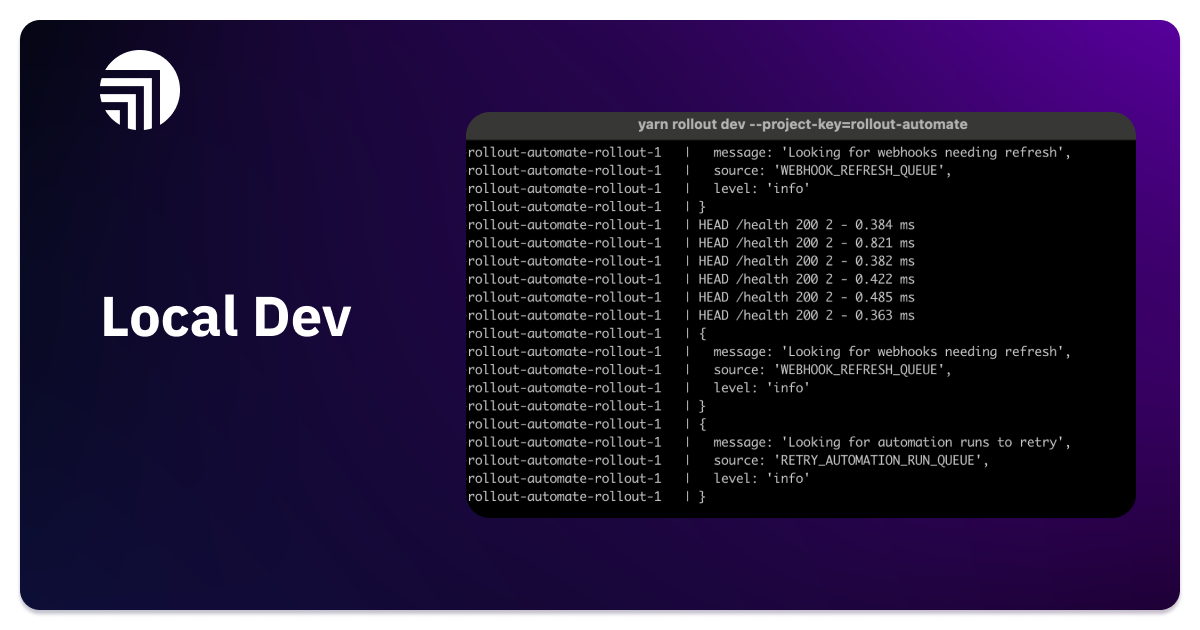
One of our goals with Rollout V2 was to have developers write their integration logic in Rollout the same way as the rest of their code. But when we released V2, one piece was missing. As of this release, we're happy to say that it is no longer true: You can now run your Rollout code locally.
You probably write code for your web app on your computer. While developing, you're likely serving it via localhost and testing it in your browser. Need to add another feature? You write code, save, and refresh the browser. This iteration cycle tends to be fast.
With this new update, you can run your Rollout project similarly. Go to the root of your Rollout repo, start the local dev server, and point your UI components to use localhost:3300. Need to add a new trigger? Write code, save, and refresh the browser. It's both simpler and faster to use.
Follow this doc on how to run your project on your local machine: https://docs.rollout.com/documentation/local-development
We've also shipped Dark Mode for your Rollout Dashboard. You can toggle your color scheme in the top right-hand corner of your dashboard.
In the last several weeks we've shipped the following connectors:
Note: all these features and new integrations are available in Rollout V2.